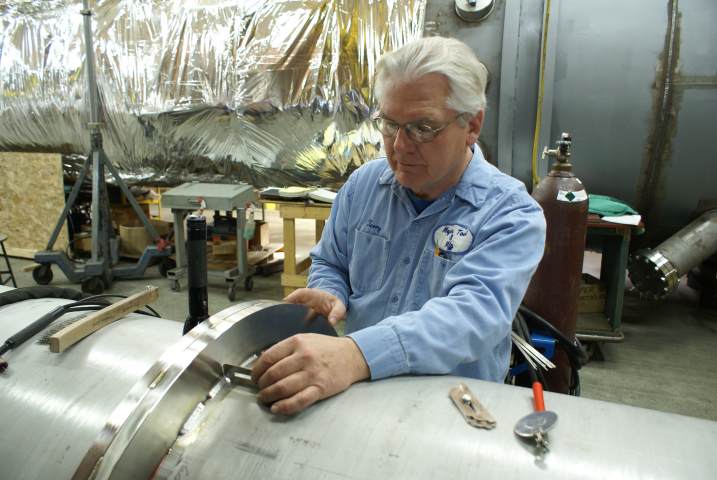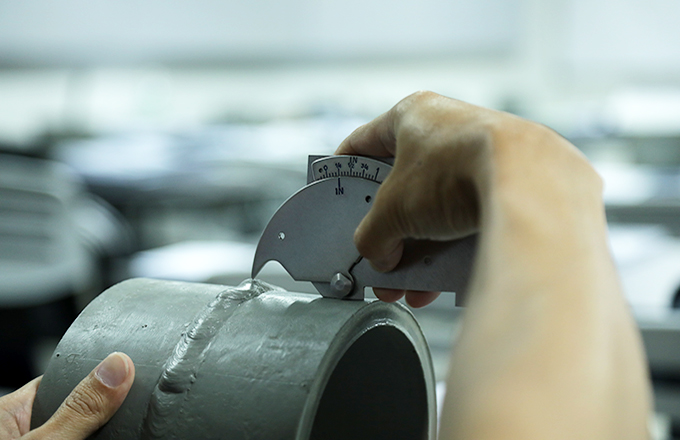Trustworthy Houston Welding Inspection for Compliance and Security Standards
Just How Welding Examination Works: An Extensive Evaluation of Techniques, Criteria, and the Role of Assessors in Making Sure Structural Stability and Security
Welding evaluation is a vital component in the building and construction and manufacturing industries, where the stability of bonded joints is paramount to safety and security and dependability. Various methods, consisting of visual and non-destructive testing strategies, are utilized to discover prospective imperfections that can jeopardize architectural performance - Houston Welding Inspection. Examiners are entrusted with not only evaluating weld high quality versus rigorous requirements however additionally translating intricate codes and requirements. As we discover the complexities of this occupation, the challenges dealt with by inspectors in keeping safety and security and conformity will certainly reveal a much deeper understanding of their critical function in protecting framework.
Value of Welding Examination
Welding inspection is essential in making certain the integrity and security of welded structures, with research studies suggesting that approximately 70% of structural failures can be mapped back to poor welding techniques. This underscores the value of organized assessment procedures throughout the welding lifecycle, from prep work to conclusion. Efficient examination not just identifies defects prior to they rise right into significant concerns however likewise makes sure compliance with sector standards and laws.

The function of welding inspectors expands past simple quality assurance; they are important in safeguarding public safety and security and minimizing liability for companies. By carrying out extensive inspection methods, firms can detect troubles such as incomplete blend, fractures, or excessive porosity, which can jeopardize the general strength of a bonded joint. Additionally, recurring training and accreditation of assessors add to the general high quality assurance in welding procedures, fostering a culture of safety and security and excellence.
In addition, welding inspection plays a crucial role in preserving operational effectiveness. Identifying problems early in the procedure helps with timely corrective activities, lowering pricey rework and job hold-ups. Inevitably, a robust evaluation framework functions as a foundation for reliable and resilient bonded frameworks, ensuring they fulfill both functional and security demands.
Usual Inspection Approaches
Exactly how can one make certain the top quality of welded joints throughout the examination procedure? The execution of various inspection methods is crucial in examining weld honesty and recognizing possible flaws. Common methods include Visual Examination (VT), which is usually the first line of protection, permitting inspectors to spot surface area imperfections such as splits, porosity, or insufficient blend by aesthetically assessing the welds.
Ultrasonic Evaluating (UT) is one more widely used technique, using high-frequency acoustic waves to identify internal flaws within the weld. This approach is especially effective for finding concerns that are not visible to the naked eye. Radiographic Testing (RT) makes use of X-rays or gamma rays to develop photos of the weld, allowing the recognition of volumetric defects, such as inclusions or spaces.
Magnetic Fragment Examining (MT) and Liquid Penetrant Examining (PT) are additionally noticeable approaches, concentrating on surface defects. MT counts on electromagnetic fields to reveal surface area and near-surface stoppages, while PT involves applying a liquid color to highlight problems. Each of these methods offers a distinct purpose, guaranteeing the comprehensive analysis of bonded joints and safeguarding architectural honesty and safety.
Criteria for Examining Welds
The examination of welds is guided by a collection of recognized requirements that ensure both performance and safety in bonded structures. These requirements encompass different variables, including weld dimension, account, and penetration, which have to adhere to defined standards. Conformity with market codes, such as those established by the American click here now Welding Society (AWS) or the American Society of Mechanical Designers (ASME), is crucial in identifying the acceptability of a weld.

Weld metallurgy plays a vital function; the evaluation thinks about the blend top quality in between this website base and filler products, in addition to heat-affected zones. Ultimately, the overall mechanical homes, including tensile strength and ductility, must meet the needs established for the particular application. Jointly, these requirements guarantee that welds not only satisfy visual criteria yet additionally carry out reliably under functional problems.
Function of Welding Inspectors
A welding inspector's expertise is pivotal in making certain the stability and high quality of welded frameworks. These specialists play a critical function in the fabrication and building and construction process by validating that welding procedures adhere to developed specs and criteria. Their duties encompass a thorough variety of tasks, consisting of visual inspection of welds, assessing welding paperwork, and performing non-destructive testing (NDT) approaches such as ultrasonic or radiographic screening to identify problems.
Welding inspectors are additionally in charge of translating welding codes and standards, making sure that the welders are certified which the products used fulfill the necessary demands - Houston Welding Inspection. They need to maintain careful documents of inspections, which work as documents of compliance and quality assurance. In addition, these inspectors commonly team up with engineers and job managers to attend to any kind of concerns that arise during the welding process, supplying suggestions for corrective visit the site activities when essential.
Along with technical skills, efficient interaction is crucial, as welding inspectors must convey searchings for plainly to stakeholders and promote training and guidance for welders. Eventually, their duty is integral to keeping security and dependability in welded structures, contributing considerably to the overall success of construction projects.

Challenges in Welding Inspection
What obstacles do welding assessors encounter in their critical duty? The intricacies of contemporary welding techniques and products present substantial obstacles for examiners charged with making sure compliance with safety and security requirements and structural stability. One main challenge is the quick development of welding technology; examiners must continually upgrade their expertise and abilities to stay effective. This recurring education is important to comprehending brand-new materials and processes, which can vary widely in qualities and demands.
In addition, inspectors commonly encounter variants in worksite problems that can hinder assessment procedures. Factors such as environmental problems, ease of access, and the physical state of the welded structures can make complex complete examinations. Time restrictions imposed by job schedules can better pressure examiners, potentially impacting the thoroughness of their assessments.
Furthermore, the subjective nature of some assessment techniques can bring about variances in assessments. Aesthetic evaluations may vary based on the examiner's experience and point of view. To alleviate these obstacles, the fostering of innovative non-destructive screening methods and standard protocols ends up being important - Houston Welding Inspection. Eventually, overcoming these barriers is vital for ensuring the safety and security and integrity of bonded frameworks throughout different industries.
Conclusion
Welding assessment is crucial for preserving structural integrity and security in different industries. Via the application of diverse inspection techniques and adherence to recognized requirements, assessors play a pivotal function in making sure and recognizing defects compliance with sector requirements. The difficulties encountered in this area highlight the necessity for continual renovation in evaluation strategies and methods. Eventually, effective welding examination contributes significantly to mitigating dangers and enhancing the general integrity of welded frameworks.
Welding inspection is a crucial component in the building and production industries, where the stability of bonded joints is paramount to security and dependability.Welding assessment is critical in guaranteeing the stability and safety and security of bonded structures, with studies suggesting that up to 70% of architectural failures can be mapped back to insufficient welding techniques. Their duties include an extensive array of jobs, including visual evaluation of welds, examining welding documents, and performing non-destructive screening (NDT) approaches such as radiographic or ultrasonic testing to identify defects.
Welding inspectors are also liable for interpreting welding codes and standards, ensuring that the welders are qualified and that the materials used fulfill the necessary demands. Inevitably, efficient welding assessment adds dramatically to mitigating risks and improving the overall dependability of bonded structures.